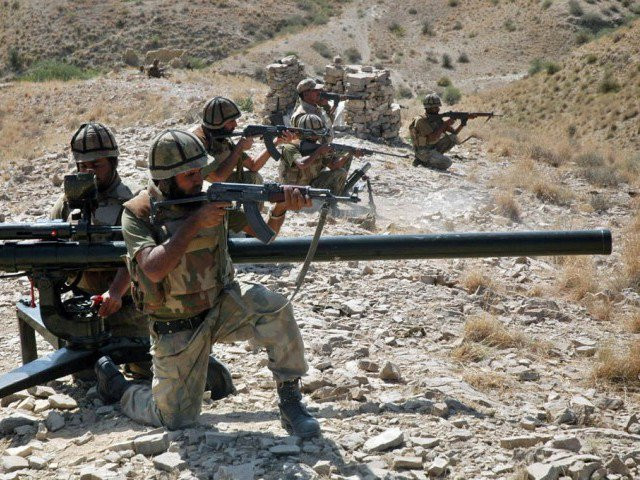Crackdown? What crackdown?
Are we to assume that this intelligence bloomed all of a sudden after the bombings of the last week?

Targeted camps were located in areas opposite Mohmand and Khyber agencies. PHOTO: AFP
With the ‘crackdown’ in full swing by the end of the week and announcements of over 100 dead in a variety of locations and both the Prime Minister and the Chief of Army Staff vowing that there would be ‘no limits’ to the response this time around; it was quickly clear that everywhere but the south of Punjab was in for a drubbing. True, Punjab and specifically Rawalpindi was the subject of ‘search and combing operations’ but there were no reports of the kind of actions that saw 18 dead in Karachi, six dead in Landi Kotal, three killed in Peshawar as well as ‘sizeable apprehensions’ across all parts of the country.
All of the above operations are, according to the ISPR, intelligence led. Are we to assume that this intelligence bloomed all of a sudden after the bombings of the last week? Are we as naive as that? We are not. The intelligence that led to the operations detailed above was to hand, and if it were not then the operations would have been impossible to conduct with such alacrity. Which begs the question that if it was known and actioned on Friday last that these groups were alive and kicking — then why were they not taken down earlier?
If there is to be a ‘crackdown’ now post-carnage in every province, why was there not a ‘crackdown’ a week, or a month, or a year ago? Those on the receiving end of the latest ‘crackdown’ have not exactly been masters of invisibility and such activity as there has been under the auspices of the National Action Plan (NAP) has been distinctly lukewarm and not only in south Punjab. Why so, might think the average person? The answer would be ‘sensitivity’ and ‘sympathy’. Sensitivity because there are votes even among those with extreme inclinations and desires, and sympathy because there are people who are sympathisers of extremist groups that actively support them financially and logistically.
Those sympathisers are present in every strata of society from top to bottom and yes, even within the law-enforcing agencies themselves. There have been reports over several years that the armed services and the police have introduced methodologies and protocols to both weed out and exclude from recruitment those that have extremist tendencies, and might present a security threat because of this. And why? Because standing forces are microcosms of the population they recruit from within. Perhaps it is time to revisit those strategies.
No such methodologies exist to de-radicalise the wider population which is the seedbed in which terrorism grows and thrives. The complete failure to construct and implement such a national plan is the single greatest failure within the implementation of the National Action Plan and it renders all other efforts virtually worthless. Crackdown? What crackdown?
Published in The Express Tribune, February 19th, 2017.
Like Opinion & Editorial on Facebook, follow @ETOpEd on Twitter to receive all updates on all our daily pieces.













COMMENTS
Comments are moderated and generally will be posted if they are on-topic and not abusive.
For more information, please see our Comments FAQ